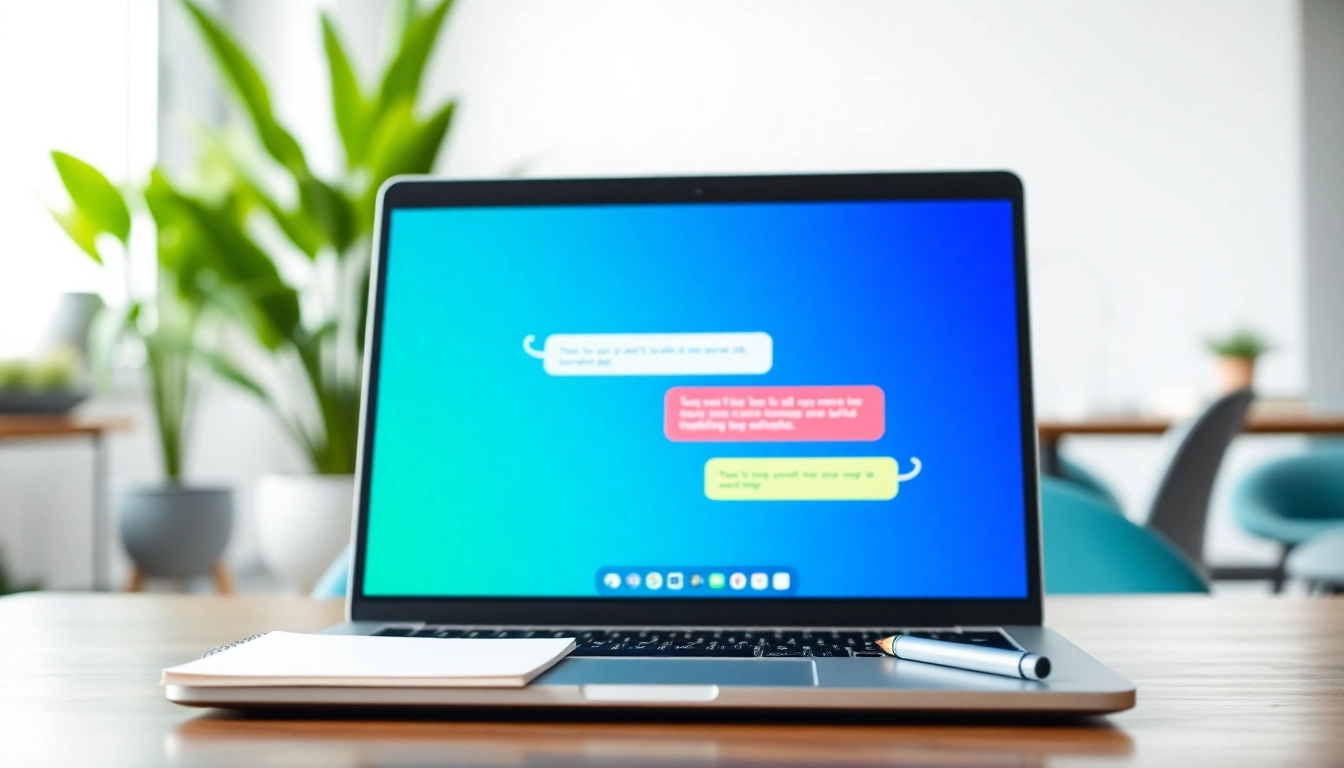Understanding the chatgpt Chatbot and Its Applications
The advent of artificial intelligence has revolutionized the way we interact with technology. Among the most significant innovations in this field is the chatgpt chatbot. Designed to simulate human conversation, chatbots powered by GPT-3 technology enhance user engagement, streamline customer support, and drive business efficiency. As organizations seek to understand and leverage the capabilities of chatgpt chatbots, it is essential to explore their myriad applications and functionalities.
What Is a chatgpt Chatbot?
A chatgpt chatbot is a conversational agent that utilizes the state-of-the-art language model developed by OpenAI known as Generative Pre-trained Transformer (GPT). Unlike traditional chatbots, which are often rigid and rule-based, chatgpt chatbots employ deep learning techniques, enabling them to understand context, generate human-like responses, and hold engaging conversations across various platforms.
Key Features of chatgpt Chatbots
- Natural Language Understanding (NLU): chatgpt chatbots can comprehend and process human language more effectively due to advanced NLU capabilities, which contribute to a smoother conversation experience.
- Contextual Awareness: These chatbots maintain context over multiple exchanges, allowing for more coherent and relevant dialogue during user interactions.
- Adaptability: chatgpt chatbots can be fine-tuned for specific domains, industries, or individual use cases, making them versatile tools for numerous applications.
- Rich User Experience: They can incorporate multimedia elements such as images, videos, and interactive buttons, enhancing user engagement.
- Learning Capabilities: Through ongoing interactions, chatgpt chatbots can learn from user inputs, continually improving their responses over time.
Industries Leveraging chatgpt Chatbots
The versatility of chatgpt chatbots makes them invaluable across various sectors. Some notable industries leveraging this technology include:
- Retail: Enhancing customer support, facilitating product searches, and personalizing shopping experiences are just a few ways retailers use chatgpt chatbots.
- Healthcare: Chatbots assist in appointment scheduling, patient queries, and providing health information, improving the efficiency of healthcare delivery.
- Finance: Financial institutions employ chatgpt chatbots for customer service, fraud detection, and transactional support.
- Education: Educational platforms utilize chatbots for personalized learning, answering student queries, and providing resources.
- Travel and Hospitality: Chatgpt chatbots streamline booking processes, offer travel recommendations, and handle customer inquiries promptly.
Benefits of Implementing a chatgpt Chatbot
Improving Customer Service Efficiency
One of the foremost advantages of chatgpt chatbots is their ability to enhance customer service efficiency. By automating routine inquiries and providing instant responses, businesses can alleviate workloads for human agents, allowing them to focus on more complex issues. For instance, a chatbot can handle inquiries about order status, payment methods, and return policies around the clock, ensuring customers receive prompt assistance at any time.
Boosting User Engagement
In a world where user attention spans are dwindling, maintaining engagement is crucial. Chatgpt chatbots can initiate conversations, provide tailored content based on user preferences, and encourage interactions through personalized recommendations. This level of engagement not only fosters brand loyalty but also cultivates lasting relationships with customers. Brands like Sephora have successfully used chatbots to offer personalized beauty consultations, which significantly enhances the user experience.
Cost-Effective Solutions for Businesses
Integrating a chatgpt chatbot within a business framework can lead to substantial cost savings. The automation of repetitive tasks reduces the need for a large customer service team, minimizing operational costs while maintaining service quality. A study by Juniper Research highlights that chatbots can help businesses save over $8 billion annually by 2024 across various sectors by significantly enhancing customer service efficiency.
Challenges in Integrating a chatgpt Chatbot
Common Integration Issues
Despite the advantages, adopting a chatgpt chatbot can present integration challenges. Technical issues can arise during the integration of the chatbot with existing systems, especially if those systems are outdated or lack proper APIs. Businesses must ensure that their IT infrastructure is compatible, and that data flows seamlessly between the chatbot and customer management systems.
User Acceptance and Interaction Quality
User acceptance is another hurdle that organizations may face. Customers are often skeptical about interacting with bots, preferring human agents for complex queries. To overcome this barrier, businesses must design chat interfaces that feel natural and human-like, ensuring that users feel comfortable engaging with the technology. Transparency about the chatbot’s capabilities and limitations also plays a crucial role in fostering trust.
Data Security and Privacy Concerns
With increasing data privacy regulations (e.g., GDPR), businesses must prioritize the security of customer data when implementing chatgpt chatbots. Ensuring data encryption, secure storage, and adherence to privacy laws is critical. Companies should also inform users about data handling practices and provide options for data deletion or anonymization to strengthen trust.
Best Practices for Deploying a chatgpt Chatbot
Creating a User-Centric Experience
To ensure successful chatbot deployment, organizations should adopt a user-centric approach. This involves conducting thorough user research to understand target audience needs and pain points. Designing the chatbot’s responses to prioritize relevance, clarity, and utility will create a more satisfying interaction. Proactively offering help and prompting users for feedback can also refine the experience further.
Continuous Learning and Adaptation
Once implemented, chatgpt chatbots should not be seen as a static solution. Continuous learning is essential to improve performance. Businesses should monitor user interactions to identify frequent issues or topics, and update the chatbot’s knowledge base accordingly. Implementing machine learning techniques allows chatbots to evolve alongside customer expectations, adapting to new trends and behaviors.
Regular Performance Monitoring
Tracking the performance of chatgpt chatbots is crucial for optimizing their effectiveness. Key Performance Indicators (KPIs) such as user satisfaction rates, conversation completion rates, and response times should be regularly analyzed. Additionally, A/B testing different conversation flows can uncover insights that lead to enhanced user experience and interaction quality.
Measuring the Success of Your chatgpt Chatbot
KPI Metrics to Track
The effectiveness of a chatgpt chatbot can be measured through specific KPIs. These include:
- User Engagement Rate: Measures how often users interact with the chatbot.
- First Contact Resolution Rate: Indicates how frequently the chatbot resolves issues on the first attempt.
- User Satisfaction Score (CSAT): Gathers users’ feedback post-interaction, providing insights into satisfaction levels.
- Response Time: Evaluates the time taken for the chatbot to respond, influencing customer experience.
Gathering User Feedback
User feedback is vital for understanding the strengths and weaknesses of a chatgpt chatbot. Organizations should implement methods to collect feedback effortlessly, such as quick surveys after interactions or follow-up messages. This proactive approach can provide actionable insights for enhancing the chatbot’s capabilities and addressing user concerns.
Adjusting Strategies Based on Analytics
Data-driven decision-making is critical for improving chatbot performance. Analyzing collected data allows businesses to identify trends and make informed adjustments. Whether it’s refining conversation scripts, adding new functionalities, or correcting frequently faced challenges, regular strategy adjustments based on analytics ensure the chatbot remains effective and relevant.


